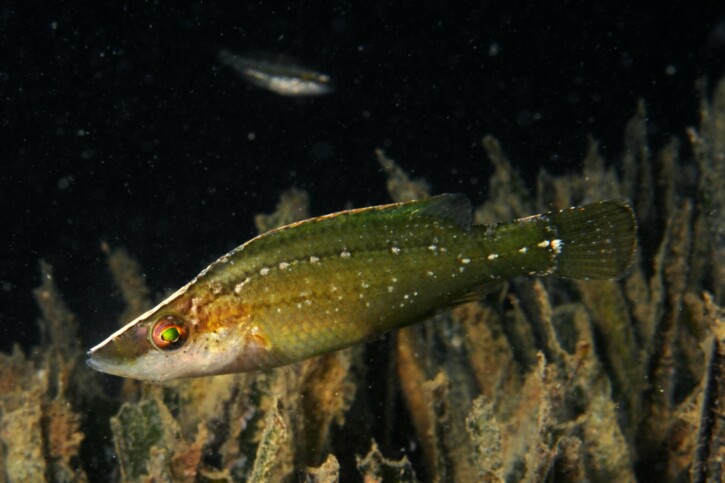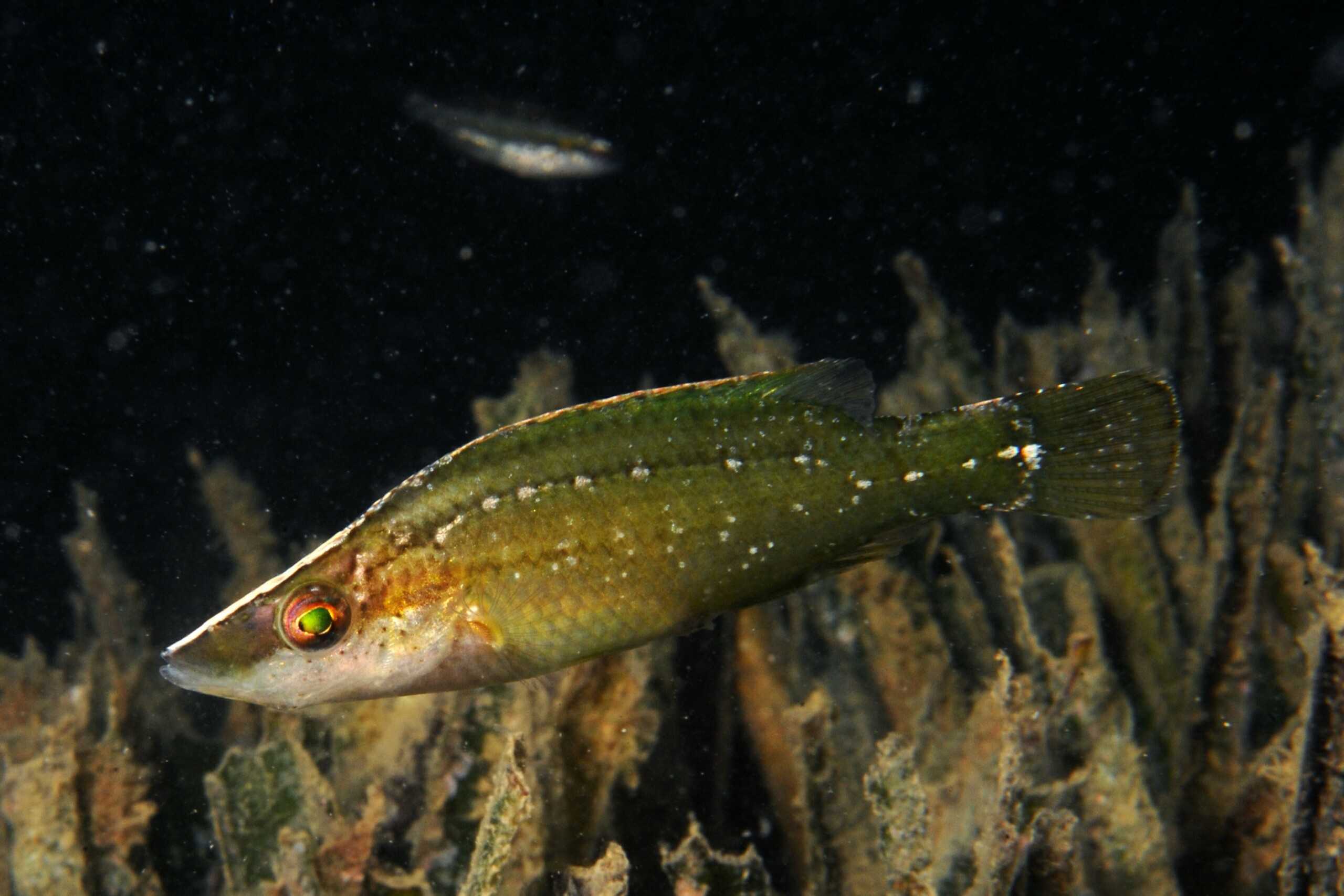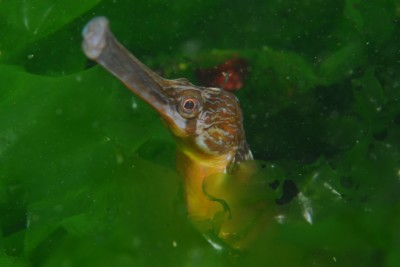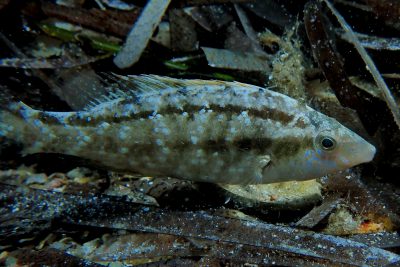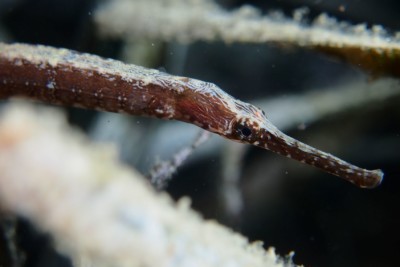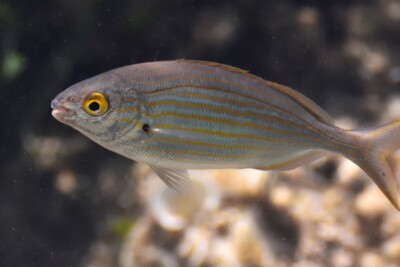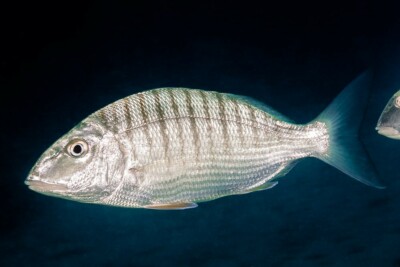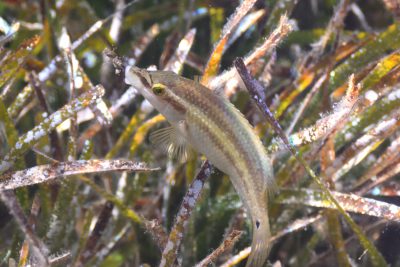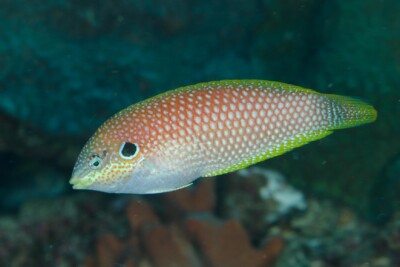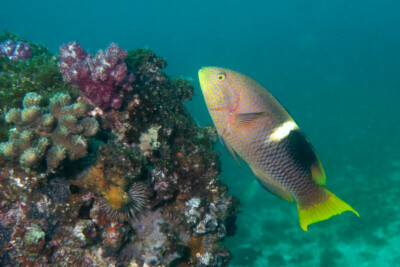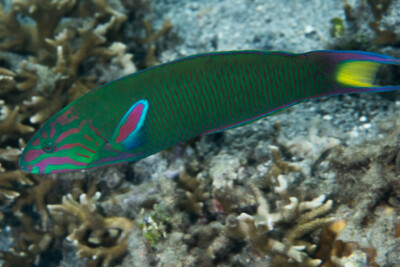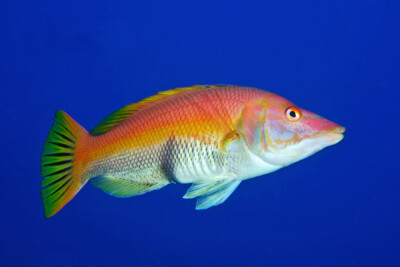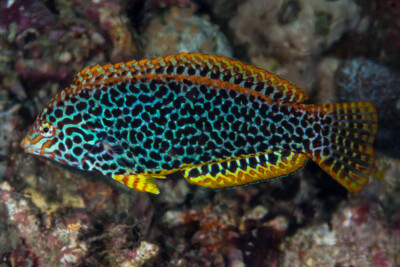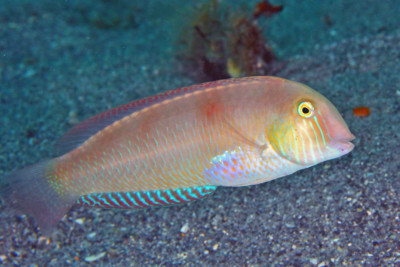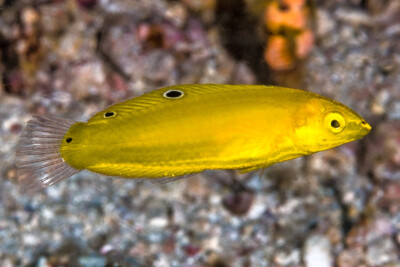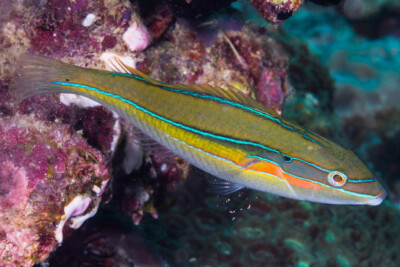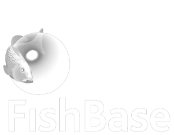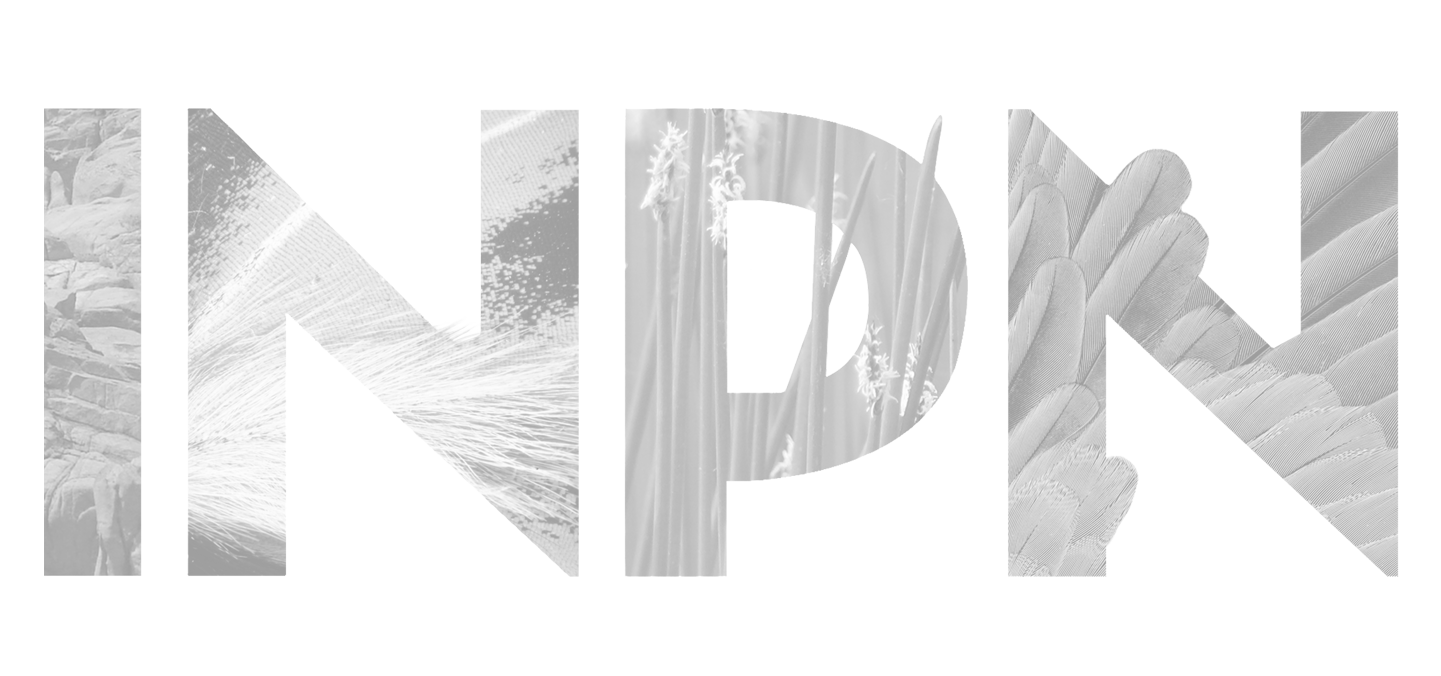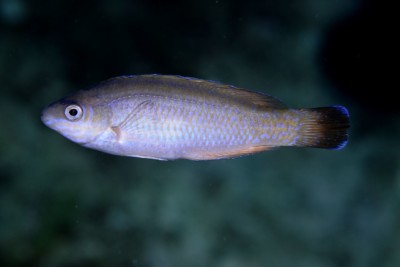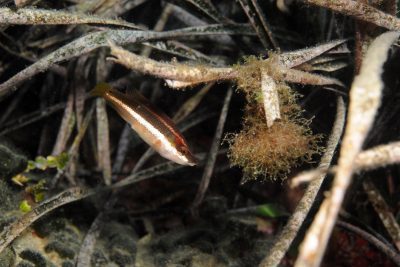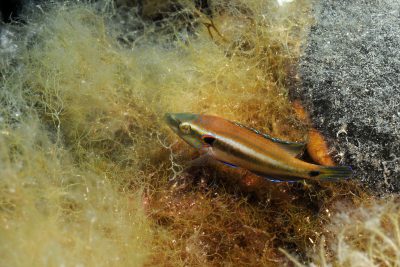Introduction
The Symphodus rostratus, more commonly known as the pointed-snout wrass, is endemic to the Mediterranean Sea.
The species name rostratus comes from the Latin word meaning curved like a beak, referring to the very characteristic shape of its mouth.
Who is it?
Morphology
-
Type
-
Average size12 cm
-
Maximum size14 cm
-
ShapeRectangular
-
Mimicryplants
-
Type
-
Average size12 cm
-
Maximum size14 cm
-
ShapeRectangular
-
Mimicryplants
How to recognize This fish ?
The pointed-snout wrass is laterally compressed and unicolored with a predominantly green or brown body. The flanks are marked with two dark bands that meet at the caudal peduncle.
These bands are more or less visible depending on its mood. The protractile mouth curved upwards is characteristic of this species.
Sexual dimorphism
There is no apparent dimorphism in this species. However, males grow faster than females.
Behaviour & Life cycle
-
dietomnivorous with carnivorous tendency
-
Sociabilityliving as a couple or alone
-
territorialYes
-
Way of livingdiurnal
The pointed-snout wrass is a solitary fish that naturally resides close to the bottom or various crevices. This lively little fish easily blends in with its environment. It sleeps with its head tilted downwards, usually in seagrass beds.
Reproduction
-
Reproductionovipare qui pond sur substrat découvert
The pointed-snout wrass is an oviparous fish. In the spring, the male prepares a nest of algae and waits for females by positioning itself just above. It then displays a white medio-dorsal line signaling its presence to the females.
When a female approaches, the male courts around her, guiding her to his nest. After spawning, the male fertilizes the eggs and positions himself above again, watching for the arrival of a new female.
Females do not care for the eggs. After a few days, the male stops courting and cares for the eggs until they hatch.
Harmless species
This species does not pose a particular danger to humans when encountered in its natural habitat.
Origin and distribution
What is its habitat?
Natural environment characteristics
-
Depth0 - 50 m
Biotope presentation
The pointed-snout wrass is most commonly found at depths of less than 50 meters. The species particularly favors coastal rocky areas and seagrass beds.
Species of the same biotope
Fishkeeping
Not recommended
We do not recommend keeping this species in an aquarium. It has unpredictable needs which, if not met, generate significant stress, potentially leading to a shorter life expectancy, an interruption of its growth or the development of pathogens.
To go further
Sources & Contributions
Participation & Validation
The Fishipedia team and specialist contributors are committed to providing high-quality content. However, although the information comes from scientific sources or testimonials from specialists, the cards may contain inaccuracies.

Adrien Falzon

Benoit Chartrer
Translation
Translation done with the valuable contribution of our translators, who make this information available to a wider audience. We sincerely thank them for their commitment.
Scientific partners
Species of the same family
Same genus
Species of the same biotope
